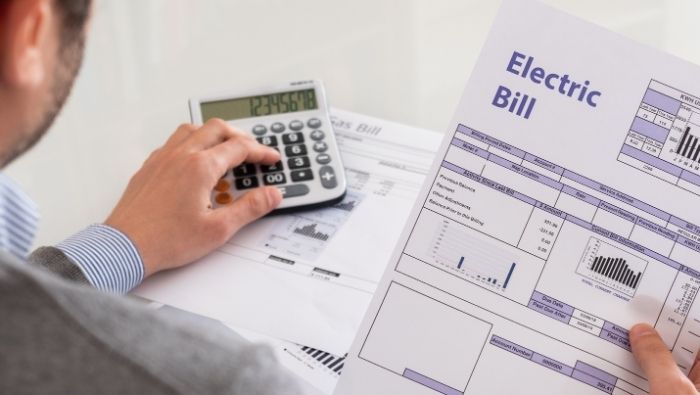How Much Does It Cost To Cool Your Home?

Summer cooling costs bring an increase in energy bills. If you want to make sure you’ll have room in your budget, it’s helpful to determine how much it costs to cool your home so you can find ways to save.
If you’re trying to plan ahead for this summer’s budget and considering your options for keeping your home cool within a reasonable price range, it can be very helpful to compare options and see what you can expect to be paying.
While the variants will clearly vary these formulas according to your location and the condition of your cooling equipment, you can still get a fairly good estimate with a basic formula.
A Couple of Terms To Know First
“W” – A “W” is a watt, which is the standard unit for measuring power.
“BTU” – A BTU stands for British Thermal Unit and measures thermal heat energy. In terms of ACs, they will generally rank in the 1000s.
“EER” – EER stands for the Energy Efficiency Ratio of any given appliance and basically tells you exactly how much cooling your AC will be able to provide you based on the amount of electricity it’s using. The higher the EER rating, the less energy it consumes.
As a basic rule, anything over 10 is deemed “good” in terms of energy efficiency. Some southern states, such as Florida, may have a minimum EER requirement. In Florida, it is now 14.
You will often see “energy consumed” represented by a “W,” and EERs can also be listed as BTU/W.
This means if you have two ACs, “A” vs. “B,” and both have a BTU of 20,000, but “A” has a 1,500 W rate and “B” has a 2,000 W rate, you can simply divide 20,000 by 1,500 and 2,000 respectively to figure out the EER. Thus, “A” would have an EER of 13.3, and “B” would have an EER of 10, making unit “A” the better choice in terms of energy consumption. Note that you will have to pay for the higher EER ranking, but should save money over the long run.
“SEER” – The SEER takes things to the final step and tells you the Seasonal Energy Efficiency Ratio, which is determined by BTU divided by watts within a given cooling season. As with EER, the higher the SEER, the more energy efficient the AC is.
Sign Up for Savings
Subscribe to get money-saving content by email that can help you stretch your dollars further.
Twice each week, you'll receive articles and tips that can help you free up and keep more of your hard-earned money, even on the tightest of budgets.
We respect your privacy. Unsubscribe at any time.
What Does This Equate To for Home Cooling?
With this background information in place, you can get a basic idea of how much it’s going to cost to cool your home using one last formula. You can determine it with this example:
Unit: a 5,000 BTU AC at 1,500 Watts
SEER: 10 BTU/W
Time: operating for a total of 1000 hours during an annual cooling season, determined as 8 hours per day for 125 days
The annual total cooling output:
5000 BTU/h x 8 h/day x 125 days/year = 5,000,000 BTU/year
With a SEER of 10, the annual electrical energy usage would be:
5,000,000 BTU/year / 10 BTU/W = 500,000 W /year
The average power usage may also be calculated more simply by:
Average power = (BTU/h) / (SEER) = 5000 / 10 = 500 W
* If your electricity cost is 20 cents/W, then your cost per operating hour is: 0.5 kW * 20 cents/W = 10 cents/h
* You will need to contact your local electricity company and figure out what the cost per watt is per hour to make this relevant.
To get a cost per year, you will need to figure out how many hours you plan on running your AC and multiply it out by your final cost per operating hour.
Reviewed June 2023
Wouldn't you like to be a Stretcher too?
Subscribe to get our money-saving content twice per week by email and start living better for less.
We respect your privacy. Unsubscribe at any time.
Popular Articles
- 7 Habits of Highly Frugal People
- 5 Simple Budget Cuts That Can Save $200 a Month
- How to Track Down Unclaimed Funds Owed You
- 32 Ways to Save Money on Your Utility Bills
- Do You Need Credit Life Insurance When Buying a New Car?
- How to Maximize Profits When Selling Online
- Staying Motivated to Continue Digging Yourself Out of Debt
On After50Finances.com
- 9 Things You Need to Do Before You Retire
- You Didn’t Save Enough for Retirement and You’re 55+
- When Empty Nesters Reorganize and Declutter Their Home
- Reinventing Your Career in Your 50s or 60s
- What Mature Homeowners Should Know about Reverse Mortgages
- 2 Reasons to Collect Social Security Benefits As Soon As Possible

